Everyone,
I was able to get a set of very gently used Andersen In Swing Exterior French Doors in excellent condition. (The kitchen renovation plans called for different doors so the owner could no longer use them). The jamb was removed intact but was inadvertently flattened on the job site. I still have all four parts (head, sides, etc.), but because the parts were screwed together at the corners, all of the corners were damaged when the jamb was racked. (Out of curiosity, I called Andersen, but they want almost $1,000 for a new jamb. The old jamb should help me with the measurements) The doors will replace a large dining room window (in my own house) to allow direct access to a deck. (No screens needed because the deck will be screened in). With respect to fabricating a new door jamb, because the doors are moderately heavy, one colleague advised me to use double layer of 3/4 inch plywood for the side and top jambs (The double layer would make an easy rabbet for the side jambs). Another buddy advised making my own jambs out of one inch solid stock. (I have a complete shop so making jambs from stock would not be a problem.)
I would appreciate input on what material to use for these exterior jambs (e.g. what kind of plywood or what kind/size stock). Also, I don’t have a brake for the pan, so I would also like to know if anyone has had success with the PVC pan flashing (or other suggestions for the pan).
Thanks for your help.
Frank R.
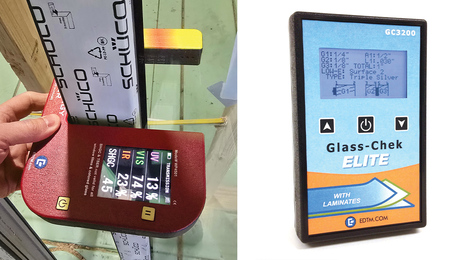
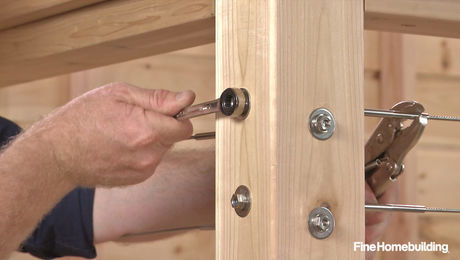
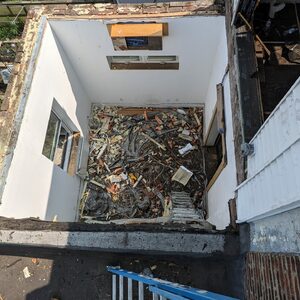
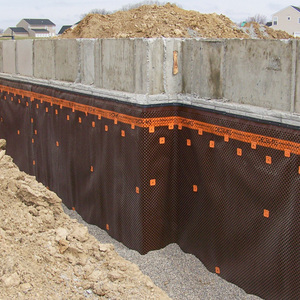
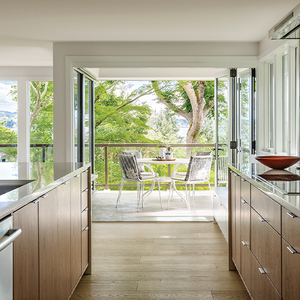
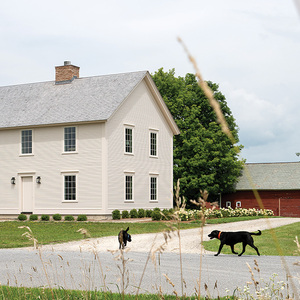













Replies
Greetings FR,
This post, in response to your question, will bump the thread through the 'recent discussion' listing again.
Perhaps it will catch someones attention that can help you with advice.
Cheers
'Nemo me impune lacesset'
No one will provoke me with impunity
I'd spend the grand....the doors you have seal against the jamb, with a weatherstripping that is essentially on the face of the doors, not the edges, as a result, the fit has to be da-n near perfect, and you can't just plane the doors to fit...DAMHIKT
also, the lock mechanism slides up and down into the head and sill jambs, respectively...
unless that screened in porch is a lot more like a three season room, I'd expect them to leak air like a sieve.....
but if you do decide to build it yourself, I'd love to see what you come up with...
There have been many problems with frenchwood doors delaminating and you have no warrenty. If they fail all your jamb work is for nothing. You can buy a brand new, off brand, french door set at your local big box for less then a grand including jamb if you can't afford Andersen.
Throw those doors out, it'll never be the silk purse your hoping for.
Just a question along this thread, what is a "French door"? I have seen many different types of doors refered to as French doors, what makes them French? I am currently taking out some sliders for a client and installing "French doors". To me they are just two doors that open inward from a lanai and have 6 glass panesl.
"ust a question along this thread, what is a "French door""I think that classically it was paired, hinged outswing doors. And because of the technology at the time they where 6 or 8 light doors.But now days I think that the term is so miss used that it can mean either and door with 2 sections with a hinge(even a "patio" or "antrum" door where one section is fixed and the other hinges in the middle).Or any door (one or 2 sections) with 6-8 lites.
A French door is a door made in France. A pair of French doors means two doors made in France, usually operating together.
But seriously folks, it (French Doors) is currently a marketing term broadly applied to mass produced near c**p in an attempt to add a bit of class to woefully made "doors." Oh yeah, there is glass in them, usually some grille affair with ticky tacky on it to stick it to the glass, all to last a warranted lifetime (7 years or less, pro-rated).
If you haven't seen the tall, paired operable windows in the Western European tradition in their native element, then go to the Biltmore House in Asheville and see what has been faithfully copied there. The windows/doors go full to the floor, have very narrow stiles and rails and muntins (to maximize light), are fairly thick, swing to the inside of thick masonry walls, and have interior cremone hardware latching. These types of windows or doors allowed for truly opening a room up to a veranda or loggia, and the free egress of people, a la soiree`.
There is no substitute for the real thing, despite what the marketers insist. If properly made and hardwared, new paired doors will last longer than our lifetime and age a lot better than us. The catch is "properly made." The Wal-Marting of America has resulted in the marketplace devaluing craft and skill to the point where less than 1% of new construction will take advantage of such good quality.
Why pay more than $1,000.00 indeed.....
Dave S (Cranky)
An excellent explanation, mahalo.
OK so i'm not with tossing anything that can be used out... I think I'd build a jam with the stuff you have left for one door only then I'd build another jam/frame for the other door have'n it "fixed" non opening , attach em into one unit trim em out and i bet they will work and look fine... and the tell all is that i bet if done with just a little skill no one but you will ever know
good luck
p
because the parts were screwed together at the corners, all of the corners were damaged when the jamb was racked
Bondo and epoxy can fix an awful lot of wood damage.
Good luck,
Don
Everyone,
Thanks so much for the practical responses. You saved me a lot of time. I think I will try to repair and use the existing jamb parts. I was looking for a windfall. The doors are nice, but they are not what I would have picked if buying the set new. As such, if I'm going to have to buy a new jamb for $1,000, I'll spend the extra money and just buy a new set of doors.
I call them French doors because that is what Andersen describes them as. I don't know what makes them "French". I agree, they're just two in-swing doors.
Frank R.
I only read your first post, and not all of it. Is this a Frenchwood hinged door, with the pultruded glass exterior cladding?
Stinger,
The doors are in-swing, vinyl clad exterior and originally unfinished pine interior. The glazing covers most of the door, with an applied grill on the interior side of the glass. My first post was too long, but the short question was whether I could make replacment door/head jambs (because the original ones were damaged when the door was removed from the previous structure) and what to make them out of. I have all of the pieces, but the corners are cracked. I think I'll try to repair this set.
FR
Perhaps something as simple as putting reinforcing metal bracket at the two outside corners?Let's not confuse the issue with facts!
Thanks for the suggestion. I was going to try someting along those lines. I'm also going to be sure to use a flash pan under the jam.
Thanks again.
FR
If they are Andersen Frenchwoods, then they probably have a 3 point latch system that will be be near impossiblt to duplicate (hence the $1000). That is designed to keep the doors from twisting over time as well as for air infiltration.
Also the hinges are adjustable (read expensive) and again would be very hard to do on your own.
Good luck!